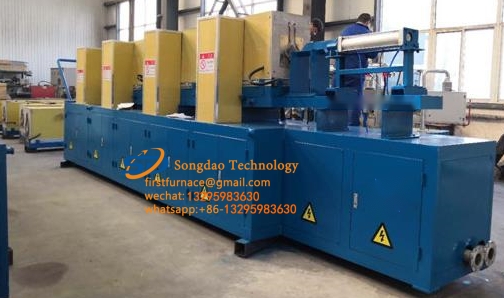- 05
- Feb
Tsela ea ho khetha coil ea tšepe e sa hloekang futhumatsang sebōpi?
Tsela ea ho khetha coil ea tšepe e sa hloekang futhumatsang sebōpi?
1. Sistimi ea tšehetso ea li-coil ea tšepe e futhumatsang tšepe e entsoe ka lisebelisoa tse khethehileng tse kopantsoeng, e le hore phetoho e ‘ngoe le e’ ngoe ea sebōpi sa sebōpi sa induction e tsitsitse ka thata ‘me e notletsoe. Ka tsela ena, monyetla oa ho ba le lipotoloho tse khutšoanyane pakeng tsa ho chenchana ha li-coil li tlosoa. Li-coil tse fanoang ke bahlahisi ba bang li bonolo ka ho qaptjoa le ho fokola ka thata. Nakong ea ts’ebetso, ka lebaka la ts’ebetso ea matla a motlakase, ho tla ba le vibrate. Haeba coil e se na boima bo lekaneng, matla ana a ho sisinyeha a tla ama bophelo ba lesela la sebōpi haholo. Ha e le hantle, mohaho o tiileng le o tiileng oa li-coil tsa sebōpi se futhumatsang se sa hloekang se tla eketsa haholo bophelo ba tšebeletso ea lesela la sebōpi.
2. Khoeli ea marako a teteaneng tšepe e futhumatsang tšepe provides more heating energy. Compared with induction coils of other cross-sections, thick-walled induction coils have a larger current-carrying cross-section, so the coil resistance is lower and more energy can be used for heating. And because the thickness of the surrounding tube wall is uniform, its strength is higher than that of the coil structure with uneven tube wall and thinner tube wall on one side. That is to say, the coils of our stainless steel heating furnaces of this construction are less prone to damage caused by arcing and expansion forces.
3. Sebaka se bulehileng pakeng tsa ho chencha ha li-coil tsa sebōpi sa mocheso oa tšepe e sa hloekang se loketse ho tsoa ha mouoane oa metsi ‘me se fokotsa potoloho e khutšoanyane pakeng tsa ho chenchana ho bakoang ke ho tsoa ha mouoane oa metsi.
4. Sekoahelo sa sebōpi se futhumatsang se nang le tšepe se nang le metsi a pholileng, se ka lelefatsang bophelo ba lesela la sebōpi. Pholiso e ntle ea lesela ha e fane feela ka thepa e ntle ea mocheso oa mocheso le thepa ea ho hanyetsa mocheso, empa hape e eketsa bophelo ba lesela. E le ho finyella morero ona, ha ho etsoa ‘mele oa sebōpi, li-coil tse pholileng ka metsi li kenngoa ka holimo le ka tlaase ka ho latellana, tse ke keng tsa finyella morero oa mocheso oa sebōpi o sa tšoaneng, empa hape li fokotsa ho atolosoa ha mocheso.
5. Different parts of the coil of the tšepe e futhumatsang tšepe a hlomelloa ka ‘mele e koetsoeng ea libopeho tse fapaneng. Ho na le libopeho tse fapaneng tsa mafito ka holimo le tlase ho khoele ea induction bakeng sa lits’ebetso tse fapaneng. Mafito ana a entsoe ka thepa e khethehileng ea refractory.
6. Some unique processes are adopted in the production of the coils of the stainless steel heating furnace. The induction coil of Haishan Electromechanical adopts T2 square oxygen-free copper tube after annealing treatment before it can be used. No lengthened joints are allowed, and the wound sensor must be made through the main processes of pickling, saponification, baking, dipping, and drying. After 1.5 times the water pressure (5MPa) test of conventional pressure, it can be assembled after 300min without leakage. Both the upper and lower parts of the induction coil are provided with copper tube water cooling rings. The purpose is to make the furnace lining material uniformly heated in the axial direction and prolong the service life of the furnace lining.

